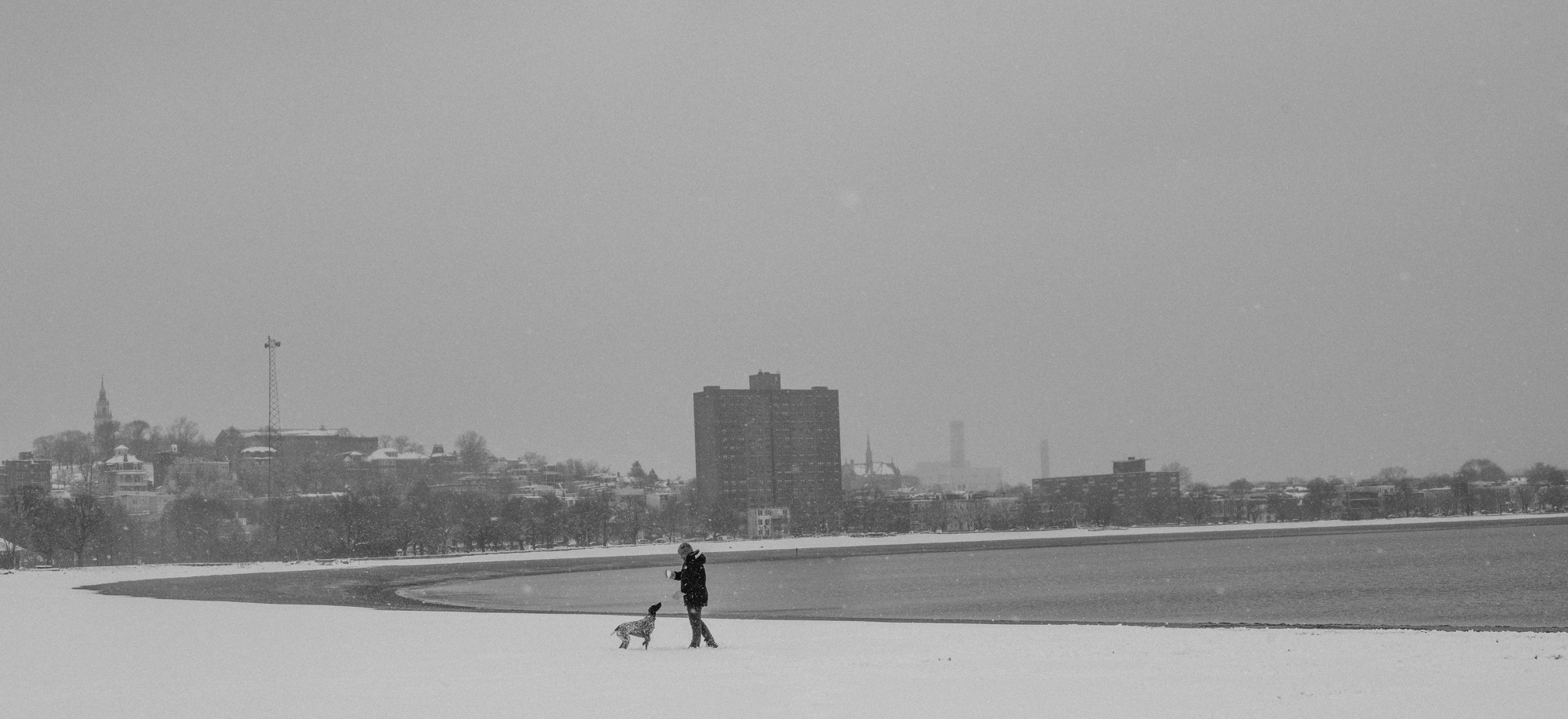Carson Beach, South Boston | Image ©2018 Mike Belleme
In Boston, sea level rise is a big deal with even bigger consequences. In fact, a 2018 study suggests, “that some 90,000 homes valued at $63 billion could face chronic flooding by the end of the century — and that’s just in Massachusetts”. With projected sea-level rise of 21 inches by 2050 and increasingly severe storms, Boston has made climate change planning a priority.
In working with the City of Boston on many of their Climate Ready Boston initiatives, such as Coastal Resilience Solutions for East Boston and Charlestown, Moakley Park and Downtown Boston, our team has been knee-deep (literally) in this complex issue. And we’ve learned, there are no easy solutions.
In approaching climate change, we advocate for a multi-layered approach, involving numerous strategies and facets that in combination are effective and actionable, creating spaces that protect, energize, educate, and set up thoroughly new experiences. Applying diverse types of protection methods in combination to achieve success—including green infrastructure, gray infrastructure and, ‘living with water’, our team begins with the foundational belief that infrastructure should do as much as possible, that investments in flood protection should provide multiple benefits including social, environmental and economic.
GREEN INFRASTRUCTURE
Green infrastructure as a tool to combat climate change can no longer be overlooked, it must be scaled up and considered as fundamental to the planning and design process. In this vein, streets, open spaces, even buildings and infrastructures can be designed to act as a resilient landscape, directing, collecting and absorbing water. In some cases, the sustainability measures we design are explicit, as with the lowland marsh that collects stormwater and creates new space for river flooding in Erie Street Plaza; here sustainability is made visible and produces a beautiful space or element that might not be otherwise possible.
Often, though, we try to create special experiences, to bring resilient solutions to life for people. Our quadrangle, Gerstacker Grove, at the University of Michigan, is designed with lush, shady stormwater gardens with interactive lighting features that flicker in response to stormwater entering the garden—amplifying and creating a unique experience.
GREY INFRASTRUCTURE
When we incorporate grey infrastructure, we recognize that, where structural systems are necessary for resilience strategies to be effective, they need to be integrated with aesthetic character and broader landscape improvements, or be tucked away out of sight during non-flooding conditions. Designing “hidden” flood protection structures, including passively or actively deployed flood walls, piers and coastal structures, underground stormwater and sewer infrastructure, and other systems that are part and parcel of the urban environment. In the case of City Deck in Green Bay, WI, storm water protection measures are built into the structure, the seating elements act as flooding barriers as well as discrete collection spots for drainage.
LIVING WITH WATER
Protection against coastal intrusion is not always the first goal of a climate-ready strategy. Being resilient means being able to bounce back, withstanding impacts while being changed by them and adapting accordingly. For example, an approach which allows for flooding in certain areas while consolidating protection in others may be an effective strategy that can help to mitigate the challenges of threading flood protection infrastructure through a dense urban environment. In addition, in key places the landscape can be designed to withstand and even benefit from coastal inundation such as in our L Street Power Plant project.
EDUCATIONAL OPPORTUNITIES
Lastly, wherever possible we look for ways that resilience strategies can become educational opportunities. How can we bring resilience to life in ways that people feel closer connections to the waterfront, the urban environment, and their neighbors? How can we tune and amplify environmental cycles, through technology and even art, in ways that are meaningful to the daily lives of people and to the life of the city? How can we educate people (especially children) on climate change and resiliency measures? To these ends, we think creatively and inventively about social interactions and resilience. This may include ‘living with water’ strategies that bring people closer to the water as well as other means by which the creation of flood protection becomes part of a community building.
Petra Geiger is Communication Director at Stoss Landscape Urbanism.


